#2005 Cannes Film Festival
Explore tagged Tumblr posts
Text

Star Wars: Episode III - Revenge of the Sith (2005, George Lucas)
07/02/2025
#Star Wars: Episode III - Revenge of the Sith#2005#george lucas#science fiction#star wars#Star Wars: Episode II - Attack of the Clones#lucasfilm#the walt disney company#clone wars#galactic republic#jedi#obi wan kenobi#general grievous#darth vader#palpatine#The Force#galactic empire#Disney Studios Australia#ewan mcgregor#natalie portman#hayden christensen#ian mcdiarmid#christopher lee#samuel l jackson#anthony daniels#frank oz#2005 Cannes Film Festival#united states#United States dollar#Harry Potter and the Goblet of Fire
20 notes
·
View notes
Text

Eva Longoria | Cannes Film Festival | 2005
15 notes
·
View notes
Text


𝐵𝑒𝑙𝑙𝑎 𝐻𝑎𝑑𝑖𝑑
in Gucci spring 2005 at the 77th Cannes Film Festival

#fashion#haute couture#couture#cannes#cannes film festival#cannes 2024#spring summer#ss05#spring 2005#gucci#bella hadid
47 notes
·
View notes
Photo


Alessandra Ambrosio wearing Elie Saab autumn/winter 2005 couture, at the Jeanne du Barry screening & opening ceremony red carpet at the 76th annual Cannes Film Festival at Palais des Festivals on May 16th 2023.
#alessandra ambrosio#elie saab#a/w 2005#jeanne du barry#cannes film festival#cannes#2023#style#fashion#red carpet#2020s
39 notes
·
View notes
Text





2005 Cannes Film Festival - Star Wars: Episode III - Revenge of the Sith Premiere
#Hayden Christensen#haydenchristensenedit#swcastedit#mancandykings#flawlessgentlemen#mensource#dailyactors#actors#premieres#my edits
772 notes
·
View notes
Text

David Keith Lynch (January 20, 1946 – January 15, 2025)
David Lynch ploughed a highly idiosyncratic furrow in American cinema: from his beginnings as an art student making experimental short films, to the cult success of his surreal first feature Eraserhead, and on to a string of award-winning films including Blue Velvet, Wild at Heart andMulholland Drive, as well as the landmark TV show Twin Peaks. He received three best director Oscar nominations (for Blue Velvet, The Elephant Man and Mulholland Drive), and was given an honorary lifetime achievement Oscar in 2019.
Mr Lynch also avidly practiced transcendental meditation, setting up the David Lynch Foundation for Consciousness-Based Education and World Peace in 2005
He won the Palme d’Or at the Cannes film festival for Wild at Heart in 1990.
Rest in Power !
Sandro Miller, "David Lynch and his Doppelgänger, October, 2016, Hollywood Hills, California"
#art#love#movies#surreal#david lynch#rip#sandro miller#blue velvet#isabella rossellini#twin peaks#icone#mustery#film noir#eraserhead#mulholland drive#laura palmer#elephant man#wild at heart#meditation#peace#world peace#foundation#palm d'or#oscar#legend#rest in power#dune movie#dune#lost highway
102 notes
·
View notes
Text
endless research had led me to try to find the background for these images


Tyson Beckford, Jenson Button, and guest 🏳️🌈❓(from right to left)

Jenson, Amoy Pitters and Robert Rodriguez
All of these great pictures are from the 2005 Cannes Film Festival D&G After Party.
Tyson Beckford is the main one that i've seen in these pictures, known as the Ralph Lauren model from the early 2000s, many people would recognize him from Zoolander. I don't know know what Jenson was doing in Cannes at this time but there are more pictures with Kid Rock and Rose McGowan. All I know, Jenson was there having fun.
57 notes
·
View notes
Text
Bengiyo's Queer Cinema Syllabus
For those of you who don’t know, I decided to run the gauntlet of @bengiyo’s queer cinema syllabus, which is comprised of 9 units. I have completed four of the units (here is my queer cinema syllabus round up post with all the films I’ve watched and written about so far). It is time for me to make my way through Unit 5- Lesbians, which includes the following films: The Incredibly True Adventure of Two Girls in Love (1995), Bound (1996), Water Lilies (2007), Saving Face (2004), D.E.B.S. (2004), Set It Off (1996), The Handmaiden (2016), Carol (2015), Imagine Me and You (2005), Two of Us (2019), Rafiki (2018), and The Color Purple (1985).
Today I will be watching:
Rafiki (2018) dir. Wanuri Kahiu

[Run Time: 1 hour 22 minutes, Language: Swahili, English, Available on: Tubi, Google Play, Apply Play, Amazon Prime, YouTube rentals]
Summary: "Good Kenyan girls become good Kenyan wives," but Kena and Ziki long for something more. When love blossoms between them, the two girls will be forced to choose between happiness and safety.
Cast:
Samantha Mugatsia as Kena Mwaura
Sheila Munyiva as Ziki Okemi
Here is what I have learned about Rafiki (main source is Wikipedia):
Rafiki was adapted from author Monica Arac de Nyeko’s short story Jambala Tree.
Rafiki was the first feature film to feature two women falling in love to come out of Kenya.
Rafiki was the first Kenyan film to be screened at the Cannes Film Festival.
Rafiki was banned in Kenya for promoting homosexuality after the writer and director refused to change the ending. Homosexuality is illegal in Kenya and can result in 14 years imprisonment, but support for LGBTQ rights is growing.
The writer and director, Wanuri Kahiu, sued the Kenyan government in order to allow the film to be screened in Kenya long enough to meet the eligibility criteria for entry into the Academy Awards.
The ban on the film was lifted for seven days, and every day it played to a sold out audience and brought in millions of shillings (1 million KES is ~7,700 USD)
Rafiki won Best Narrative Feature at the 2019 Seattle Queer Film Festival and a Silver Hugo Award at the Chicago International Film Festival. In total, Rafiki received 17 nominations and 17 awards at various international film festivals.
This was Samantha Mugatsia’s first role and Samantha won an award for Best Actress from the FESPACO festival.
Wanuri Kahiu is also the cofounder of a media collective called AFROBUBBLEGUM which supports African art “for its own sake.”
Samantha Mugatsia was in another film in 2018 but I do not see additional credits on IMDB, Sheila Munyiva was still getting work as recently as 2023, and Wanuri Kahiu is still working as well.

So needless to say, this film is incredibly important and successful despite the barriers it found around it. I saw some reviews for this film that mentioned how the narrative was rather simplistic and the characters fairly flat and while I do not entirely disagree, though I also do not consider that to be 100% accurate. I think there are a lot of little moments of dimensionality in some of the characters that make me want to see more of them. Blacksta’s clear romantic interest in Kena and the way in which he is constantly kind and friendly to her to the point where he is the one she goes to for comfort after everything goes to shit only to have his last appearance be him stalking off angry that Kena is “hurting all the people that care about” her when she tells him she loves Ziki.
Mama Atim being homophobic to the point of a) aiding in the discovery and subsequent facilitation of a gay bashing by the local community and b) not letting Kena touch her when they meet in the hospital where Kena is working as a doctor, only to immediately turn around and tell Kena that Ziki is back in the country, thereby facilitating their reunion and the hopeful ending that got this film banned in the first place.
Kena’s father being kind and relatively accepting of his daughter’s homosexuality while there are implications around (though never direct references to) the reason he may be divorced, and remarried, with a child on the way.
Ziki being the one not to care about how much of their intimacy the public may see only to be the one to pull away from Kena after they get caught, because she is experiencing severe consequences for perhaps the first time (that is an assumption on my part, I just know the girl is relatively wealthy).
All of this to say that often the moments of complexity are small, but they do exist.

Anyhoo, I think what I am thinking the most about in way of this film is less the plot and more everything else around it. Because this queer cinema syllabus is a warm up to watching BL, the challenges this film had with getting funding (their funding sources all came from outside of Kenya), with distribution, the legal battles Kahiu had to fight to get this film seen in a country she so clearly and deeply loves. Despite that, this film was a success, it broke a number of different barriers, and I will perpetually find it interesting how the prospect of money or positive attention can do so much to get a story out into the world.
This film promotes illegal behavior, this film was banned from airing in Kenya as a result. Yet, this film still aired in Kenya because someone making a legal ruling gave it a chance to meet eligibility criteria for one of (if not the) most famous awards shows in the world. And at the end of the day it wasn’t even the film that Kenya ended up submitting to the Academy Awards. This film sold out theaters, it raked in cash, it was the first in a number of ways.
It just makes me think of countries like Korea where, sure, homosexuality is not illegal, but where certain rights are still denied to queer people. Where very few celebrities are openly queer for risk of losing their jobs, yet continues to create BLs that gain international attention. Hell, even Thailand, which has established themselves as a BL soft power, sees many openly queer people struggling to find work in the film industry in spite of how many queer stories are getting pumped out. Also, I will no longer be accepting dead fish kisses from queer shows if the first lesbian love story out of Kenya gave us actual kisses.

I don’t know exactly where I am going with this, I do not consider the situation of BL and the situation of Rafiki to be identical, just similar. That Rafiki still obtains concessions from a country where being queer can get you incarcerated because it has the chance to be seen in high profile competitions is an interesting, though not entirely surprising, phenomenon.
About the film itself: I loved the use of color in it, it falls into the same trend of all other lesbian films in that a lot of it is comprised of silent glances between women longing to be together. I think it went for a wider net with a shallower lens rather than a smaller scope and deeper exploration. I felt like the film definitely started slow, but that the relationship between Ziki and Kena developed incredibly fast, to the point where I wondered if they were maybe already together in some fashion before the film even started (not dating, but at least both already having established a mutual interest, etc). I do think Kahiu did a good job of putting enough detail in that it felt like there were other things happening around the main plot to flesh out the world these characters were living in.
I loved that when we first learn about Ziki’s desires, it is to get out of Kenya, go somewhere people have never met an actual African, and not be like other Kenyan girls. But that when the choice to leave is removed from her, and she is sent to London to escape the societal backlash from being caught being queer, that she does not want to go. I loved that Kena was the one who spent a lot of time hiding her sexuality and her affection for Ziki before they were discovered, only to be the person to try to continue, to be visible, to be with Ziki after they are caught and beaten.

I thought it was so incredibly brave of Kena to walk up to Ziki’s door, look Ziki’s mother in the eye, and ask to talk to her daughter after everything that had happened the previous night, after being threatened by Ziki’s mother when she first catches them, and insulted by her mother when she comes to pick Ziki up from the police station.
I am in awe of people who stick to their convictions in cases like this. Wanuri Kaihu, who just wanted to “portray a "normal love story" that acknowledges the heroic challenges of choosing a "difficult love"” and does not see this act as a political one did not back down when faced with the options of removing hope from the ending and letting the film play in her own country or letting these girls meet again, in the sunshine, and have it kept from her own people. It reminds me of Strange Fruit from Unit 4, actually, when Kyle Schickner rejected $6 million in funding for his film because it would not have then been able to make his main character Black and gay. I marvel at how often people do not make those same decisions.
Favorite Moment
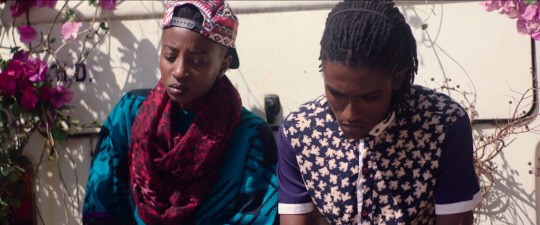
Okay, so. It is a very short and simple moment, only a few seconds long, but from my perspective it is one of the most important scenes in the entire film. Right near the end, after Kena has gone to see Ziki and Ziki has told her she will be sent to London, she goes and sits on a bench by herself. And after a moment someone just quietly takes a seat next to her. It is the other out, gay character who we have seen multiple times in passing. They just look at each other, neither of them says a word. But dear GOD I loved it so much.
Every time we have seen him before this moment, he is being harassed on the street. He is clearly living an entire life with his own struggle that exists completely outside of Kena and Ziki’s. At one point his face is bandaged, a clear indicator that he had recently been physically assaulted. Every time Kena is present when he is being harassed all she can do is get up silently and walk away. She never stands up for him, she never checks in on him. I actually had a moment of disappointment at one point when Kena storms off and Ziki goes to check on her upset because Kena left her alone. Kena opens the sliding door of the van and I thought for just the briefest of seconds that it might cut to that guy sitting there.

Instead it is candles, and they have sex, and that is also great and I am glad that scene exists, but I think in the times we are living in now, I was a little sad to see that they were not silently supporting each other. WHICH IS WHY I AM SO GLAD THAT HE DID AT THE END.
It is so so so so so important to me that this gay man, who has been living his life openly and suffering for it, and knows what it is like just sits down next to Kena to let her know that he is watching, that he is there, and that he understands. And he doesn’t even have to say a fucking word. That is community looking out for each other, and it will be beautiful every time.
Favorite Quote
“I wish we could go someplace we were real”
Score
8.5/10
It was not my favorite film, but I am so grateful that it exists, and I hope that the queer people living in Kenya who need movies like this one have found a way to watch it, and I think that the fact this film exists at all is amazing.
Coming up next, the last film in Unit 5: Lesbians- The Color Purple. I actually just got the audiobook from the library so I am looking forward to approaching the film viewing with more of an adaptation lens on it.
#bengiyo queer cinema syllabus#queer cinema syllabus#queer cinema#unit 5: lesbians#rafiki#rafiki (2018)#grateful for this project and for this film
24 notes
·
View notes
Note
thoughts on the peak dirtbag jenson moment when he commentated the 2005 monaco gp hungover (he was at the cannes film festival the night before) (he woke up passed out on a yacht because he forgot he had to commentate) with a husky voice (he said he thought he sounded cool) after his team got banned for an illegal engine
You're right this was absolutely a PEAK Jenson moment. There are clips and gifs for those who haven't seen them. Context for everyone: In 2005, Jenson was racing for BAR (which would later become Honda and then Brawn and then Mercedes) and had an overall mid season, finishing 9th in the championship. The BAR car wasn't great, and during this time Jenson was looking for a way out of the contract to potentially get to Williams (this involved a court case where the judge ruled he had to stay at BAR for 2005). In any case, BAR got handed a three race ban and a fine for an illegal fuel tank. JB was still obligated to be at the racetrack during the day, but he could party all night given that he didn't have to race on Sunday.
During the Monaco GP weekend, Jenson went to Naomi Campbell's Cannes party as well as Dolce & Gabbana's party (pics below--gold jacket is naomi's party, blue is d&g). In his autobiography he writes that he slept on the sofa of someone's yacht for a few hours, took a cab back to Monaco, had a Bloody Mary for breakfast and headed straight to the commentary box.







And in case anyone was wondering, this is what he wore to Cannes:

#i dug out my copy of life to the limit just for you! an amazing ask!!!#jenson button#buttonmania#asks
311 notes
·
View notes
Text

David Lynch, Twin Peaks and Mulholland Drive director, dies at 78
Film-maker who specialised in surreal, noir style mysteries made a string of influential, critically acclaimed works including Wild at Heart and Eraserhead
David Lynch, the maverick American director who sustained a successful mainstream career while also probing the bizarre, the radical and the experimental, has died aged 78.
“It is with deep regret that we, his family, announce the passing of the man and the artist, David Lynch,” read a Facebook post. “We would appreciate some privacy at this time. There’s a big hole in the world now that he’s no longer with us. But, as he would say, “Keep your eye on the donut and not on the hole.” It’s a beautiful day with golden sunshine and blue skies all the way.”
Last August, Lynch said he had been diagnosed with emphysema and in November, spoke further about his breathing difficulties. “I can hardly walk across a room,” he said. “It’s like you’re walking around with a plastic bag around your head.”
Deadline reported that sources had said Lynch’s health took a turn for the worse after he had to evacuate from his home due to the Los Angeles wildfires.
Lynch ploughed a highly idiosyncratic furrow in American cinema: from his beginnings as an art student making experimental short films, to the cult success of his surreal first feature Eraserhead, and on to a string of award-winning films including Blue Velvet, Wild at Heart and Mulholland Drive, as well as the landmark TV show Twin Peaks. He received three best director Oscar nominations (for Blue Velvet, The Elephant Man and Mulholland Drive), and was given an honorary lifetime achievement Oscar in 2019; he won the Palme d’Or at the Cannes film festival for Wild at Heart in 1990.
Lynch also avidly practiced transcendental meditation, setting up the David Lynch Foundation for Consciousness-Based Education and World Peace in 2005; he also produced paintings, released albums (including collaborations with Julee Cruise, Lykke Li and Karen O), created a long-running YouTube weather report and opened a nightclub in Paris in 2011. In 2018 he explained his reclusive lifestyle to the Guardian: “I like to make movies. I like to work. I don’t really like to go out.” In 2024 he revealed his lifetime cigarette habit had resulted in debilitating emphysema.
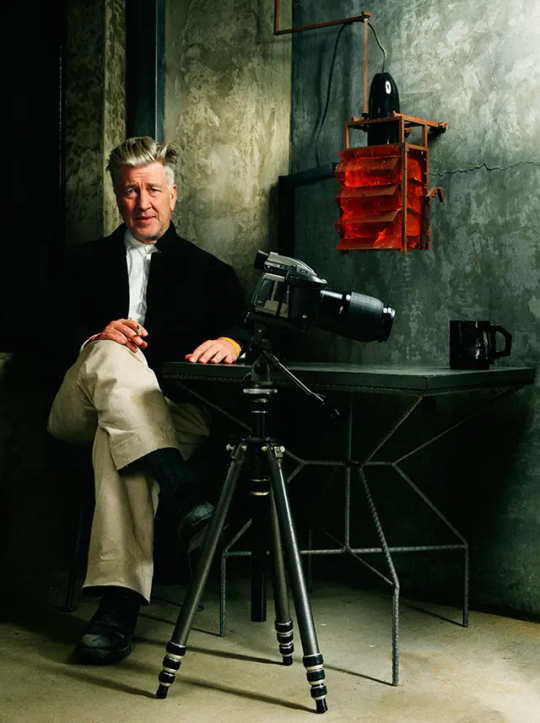
Born in Missoula, Montana in 1946, Lynch went to art college in the 1960s and made his first experimental short, Six Men Getting Sick, while a student at the Pennsylvania Academy of Fine Arts. Lynch moved to Los Angeles in 1971 and studied film-making at the AFI Conservatory, where he began filming his first feature Eraserhead. Finally finishing it in 1976, the surreal black-and-white fable was received largely with bafflement, and rejected from most film festivals, but in the late 70s became something of a success on the late-night “midnight movie” circuit.
Eraserhead’s impact led to an offer from Mel Brooks’ production company to direct The Elephant Man; starring John Hurt in a biopic of Joseph Merrick, the film about the disfigured 19th-century man was nominated for eight Oscars and secured Lynch’s Hollywood status. After turning down an offer to direct Return of the Jedi, Lynch agreed to make an adaptation of Frank Herbert’s epic sci-fi novel Dune, but the film was substantially recut in postproduction and proved a commercial and critical disaster. Instead of a planned Dune sequel, Lynch decided to make a more personal film: his dark noir thriller Blue Velvet was a cult hit and a hugely influential critical success on its release in 1986, and it resulted in Lynch’s second best director Oscar nomination.
Lynch then embarked on another noirish project, the opaque and surreal murder-mystery Twin Peaks that – unusually for notable film directors of the period – was envisioned as a TV series; Lynch developed it with former Hill Street Blues writer Mark Frost. A mix of small town comedy, police procedural and surreal dreamworld, and described as “the most hauntingly original work ever done for American TV”, Twin Peaks defied early predictions of failure on its broadcast in 1990; as a pioneer of “high-end TV” it is arguably Lynch’s most influential work. A second series was broadcast later in 1990, a feature film prequel Fire Walk With Me was released in 1992, and a third series launched more than a quarter of a century later in 2017.
As Twin Peaks went into production, Lynch began working on a feature film adaptation of Barry Gifford’s novel Wild at Heart, and cast Nicolas Cage and Laura Dern in the lead roles in a violent, haunting road movie with echoes of The Wizard of Oz. Wild at Heart premiered at Cannes in 1990 and won the Palme d’Or.
In 1997 Lynch began to edge back to his avant garde roots with Lost Highway, a surreal thriller starring Bill Pullman and Patricia Arquette, which flopped at the box office. In complete contrast Lynch released The Straight Story in 1999, a bluntly straightforward story about an elderly man (played by Richard Farnsworth) who drives 240 miles across the country on a motorised lawnmower.
Lynch then embarked on another highly successful project: Mulholland Drive. Initially it appeared to go disastrously wrong, as Lynch had pitched it as a Twin Peaks-style TV series. A pilot was shot and then cancelled by TV network ABC. But the material was picked up by French company StudioCanal, who gave him the money to refashion it as a feature film. A noir-style mystery drama, it was another big critical success, secured Lynch a third best director Oscar nomination and in 2016 was voted the best film of the 21st century. Lynch followed it in 2006 with the three-hour surreal thriller Inland Empire, shot on video and starring Dern as an American movie star who appears to mysteriously transport into the Polish original of a film she is working on.
Thereafter Lynch appeared to step back from feature films, with only the third series of Twin Peaks in 2017 representing a big film-making project, although reports suggest he had been working on a series for Netflix. Lynch took acting roles in other people’s work, most notably as Gus the Bartender in Seth MacFarlane’s The Cleveland Show, and as legendary director John Ford in Steven Spielberg’s loosely autobiographical 2022 movie The Fabelmans.
Lynch was married four times and had a long-term relationship with his Blue Velvet star Isabella Rossellini.
Daily inspiration. Discover more photos at Just for Books…?
9 notes
·
View notes
Text

Star Wars: Episode III - Revenge of the Sith (2005, George Lucas)
06/01/2025
#Star Wars: Episode III - Revenge of the Sith#2005#george lucas#science fiction#star wars#Star Wars Episode II Attack of the Clones#lucasfilm#the walt disney company#clone wars#galactic republic#jedi#obi wan kenobi#general grievous#darth vader#Palpatine#The Force#galactic empire#Disney Studios Australia#ewan mcgregor#natalie portman#hayden christensen#ian mcdiarmid#christopher lee#samuel l. jackson#anthony daniels#frank oz#2005 Cannes Film Festival#united states#United States dollar#Harry Potter and the Goblet of Fire
22 notes
·
View notes
Video
youtube
Congratulations to Cher on her installation in the Rock and Roll Hall of Fame!
Often referred to by the media as the "Goddess of Pop", she has been described as embodying female autonomy in a male-dominated industry. She is known for her distinctive contralto singing voice, for having worked in numerous areas of entertainment and for adopting a variety of styles and appearances. Cher rose to fame in 1965 as one half of the folk rock husband-wife duo Sonny & Cher before releasing her first solo top-ten singles "Bang Bang (My Baby Shot Me Down)" and "You Better Sit Down Kids". Throughout the 1970s, she scored the US Billboard Hot 100 number-one singles "Gypsys, Tramps & Thieves", "Half-Breed", and "Dark Lady", becoming the female solo artist with the most number-one singles in US history at the time.
Cher reached a new commercial peak in 1998 with the dance-pop album Believe, which featured pioneering use of Auto-Tune to distort her vocals, known as the "Cher effect". The title track became the number-one song of 1999 in the US and the best-selling single of all time by a female artist in the UK.
Having sold 100 million records, Cher is one of the world's best-selling music artists. Her accolades include a Rock and Roll Hall of Fame induction, a Grammy Award, an Emmy Award, an Academy Award, three Golden Globe Awards, a Cannes Film Festival award, the Billboard Icon Award, and awards from the Kennedy Center Honors and the Council of Fashion Designers of America. She is the only solo artist to date to have a number-one single on a Billboard chart in seven consecutive decades, from the 1960s to the 2020s. Her 2002–2005 Living Proof: The Farewell Tour became the highest-grossing concert tour by a female artist ever at the time, earning US$250 million (equivalent to $390 million in 2023). Aside from music and acting, she is noted for her trendsetting, elaborate outfits, political views, social media presence, philanthropic endeavors, and social activism, including LGBT rights and HIV/AIDS prevention.
9 notes
·
View notes
Text
Alain Delon, the giant French actor and film producer who worked with some of Europe’s most revered 20th-century directors, died at 88 💔 in Douchy-Montcorbon (Centre-Val de Loire). Celebrated actor and star of Plein Soleil Le Samouraï, The Leopard, and many more, was immortal, his talent, charisma, aura and melancholic unforgettable face shook up our lives and made him destined for a Hollywood career at a young age, but he chose France, which made him an international icon, and earned him enduring popularity.
Born in 1935 in Sceaux in the Paris 🇫🇷 suburbs, Delon was expelled from several schools before leaving at 14 to work in a butcher’s shop. After a stint in the navy - French Navy Fusiliers(during which he saw combat in France’s colonial war in Vietnam), he was dishonourably discharged in 1956 and drifted into acting. He was spotted by the Hollywood producer David O Selznick at Cannes and signed to a contract, but decided to try his luck in French cinema and made his debut with a small role in Yves Allégret’s 1957 thriller Send a Woman When the Devil Fails.
Alain Delon. CLH** ; Born. Alain Fabien Maurice Marcel Delon, actor and film producer received numerous accolades, including Honorary Palme d'Or 2019; National Order of Merit 1995; Cesar Award for Best Actor 1985; Ordre des Arts et des Lettres; David di Donatello Special Award 1972; TIFF Award for Lifetime Achievement 2017; Berlin International Film Festival Award -Honorary Golden Bear 1995; Locarno International Film Festival: Lifetime Achievement Award 2012; Chevalier 1991; Officier 2005
The most beautiful man to ever live.
Alain Delon in his breakout film Plein Soleil (Purple Noon) 1960 ‧ Thriller/Crime. Everything captured in this film is beautiful... the locations, the light, and above all the people. You should watch it... obviously.

Originally the 1960 French thriller Plein Soleil – was remade for a modern audience as The Talented Mr Ripley.
The fictional town Mongibello, where most of the film takes place, was filmed around Naples, Italy. The location adds an exquisite touch to the storyline.
Adieu Alain!
RIP Alain Delon 1935-2024 🥀 🖤

**The National Order of the Legion of Honour 🎖(French: Ordre national de la Légion d'honneur) ⚜️ formerly the Royal Order of the Legion of Honour (Ordre royal de la Légion d'honneur), is the highest French order of merit, both military and civil and currently comprises five classes. Established in 1802 by Napoleon Bonaparte, it has been retained (with occasional slight alterations) by all later French governments and regimes.
#Alain Delon #actor #French #filmproducer #Sceaux #Douchy-Montcorbon #PleinSoleil #LeSamouraï #TheLeopard #unforgettable #OrdrenationaldelaLégiond'honneur
Posted 18th August 2024
11 notes
·
View notes
Text
Dolores del Rio - Hollywood's First Latin Superstar
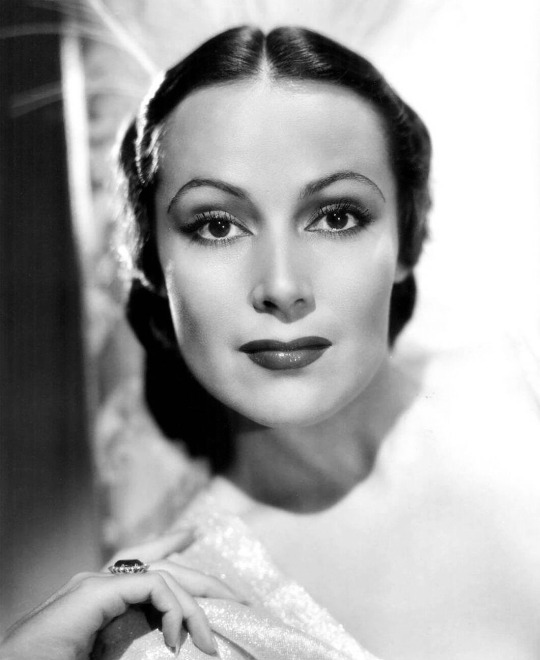
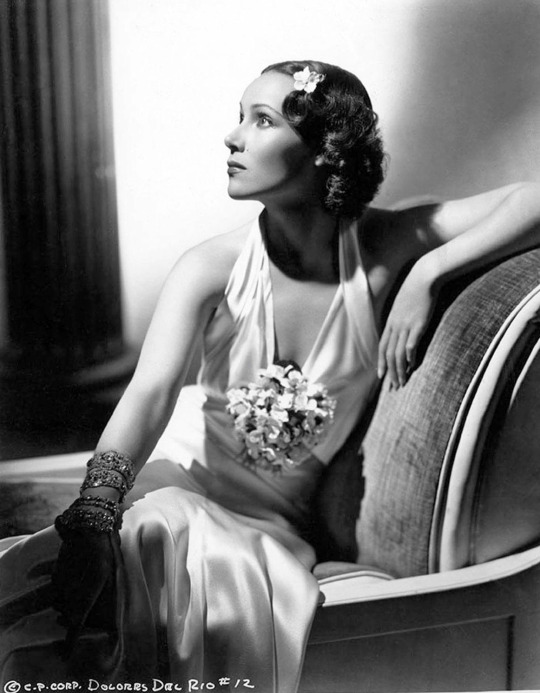
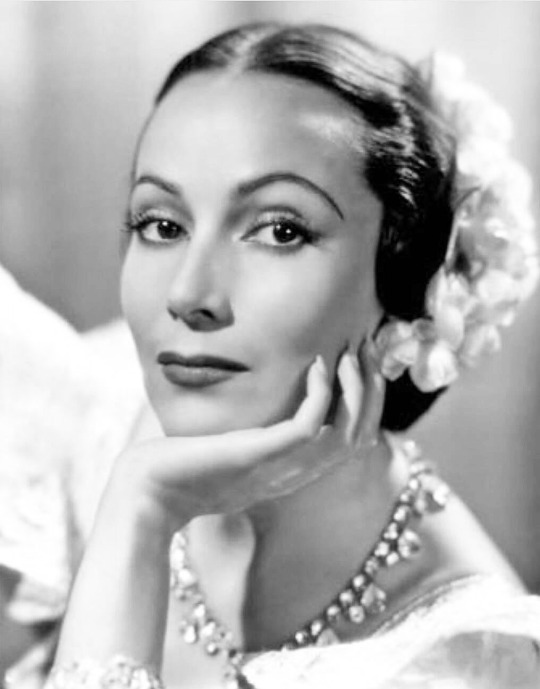
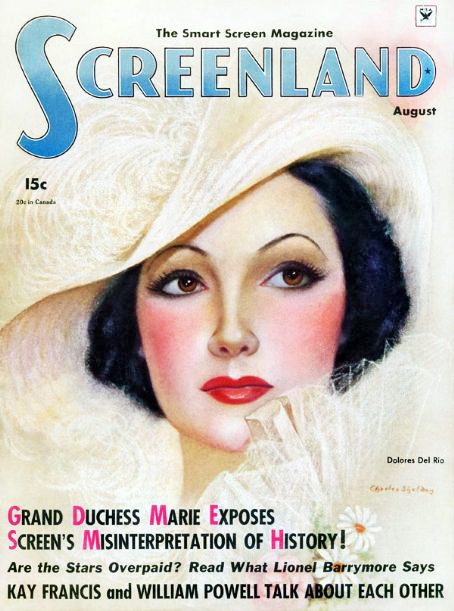
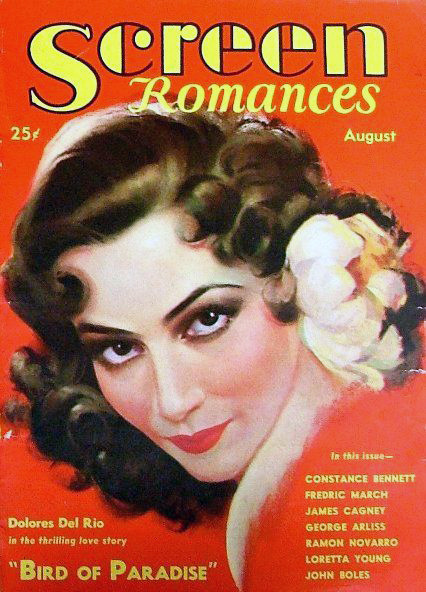
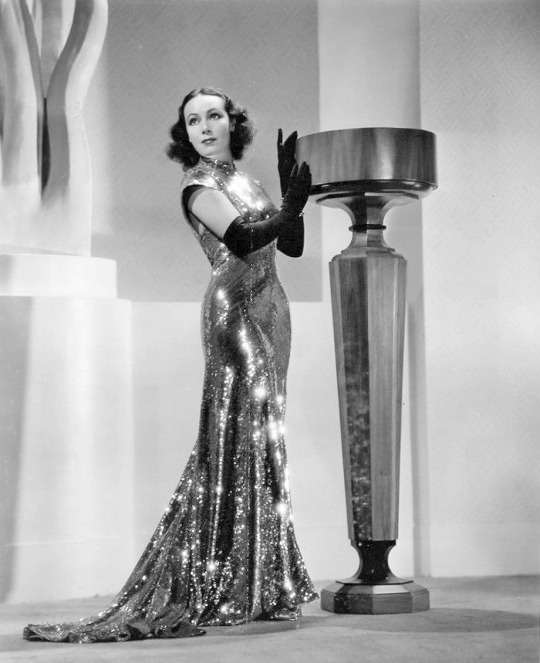
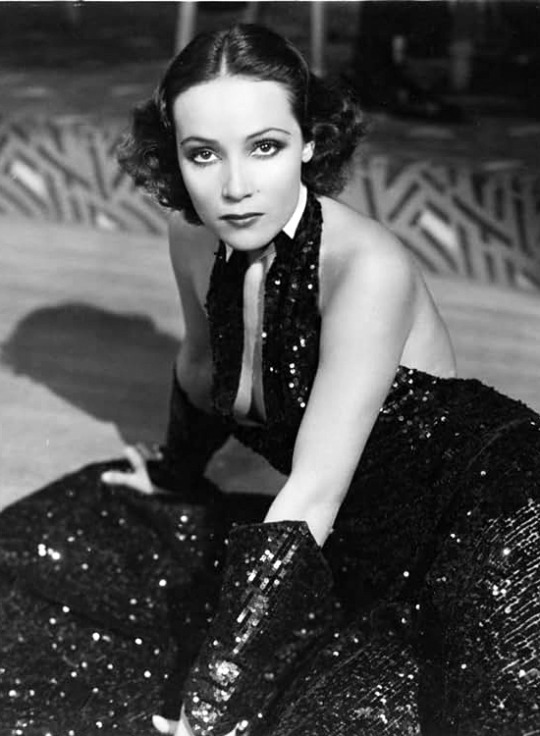
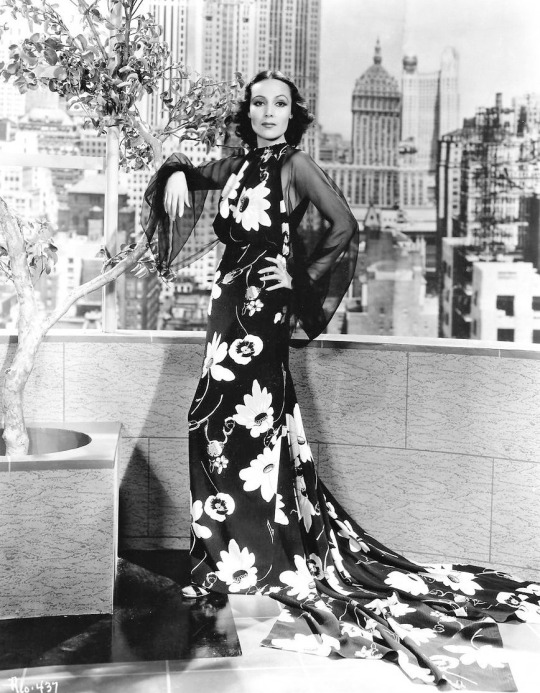
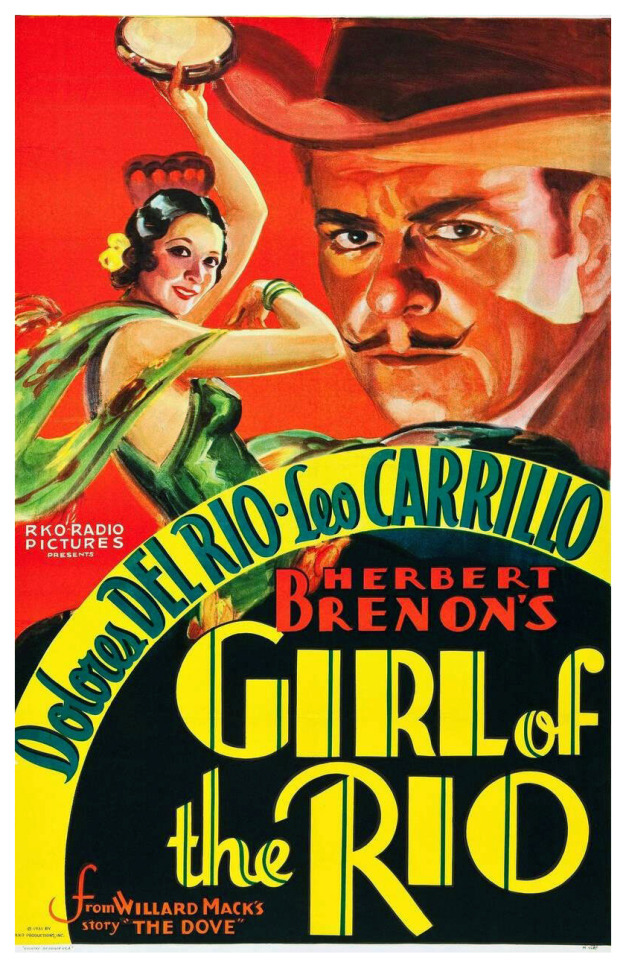
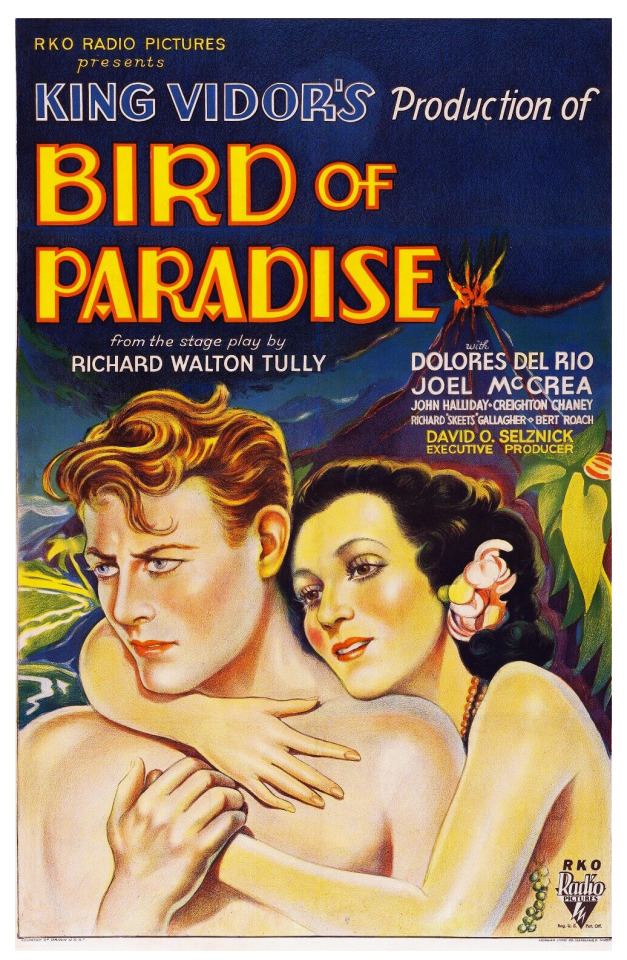
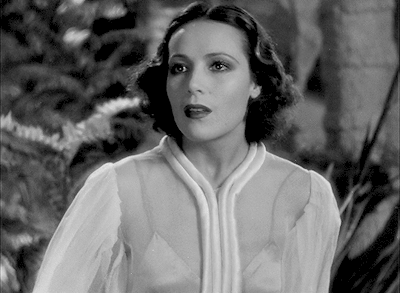
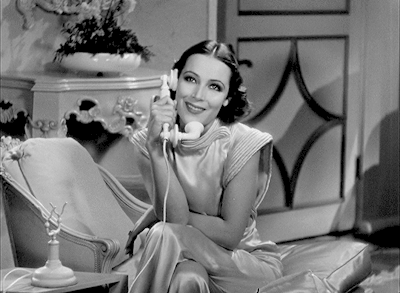
María de los Dolores Asúnsolo y López Negrete (born in Victoria de Durango, Durango on 3 August 1904), known professionally as Dolores del Río, was a Mexican actress whose career spanned more than 50 years. With her meteoric career in the 1920s/1930s Hollywood and great beauty, she is regarded as "Hollywood's First Latin Superstar."
Del Rio came from an aristocratic Mexican family whose lineage went back to Spain and the viceregal nobility. Her family lost all its assets during the Mexican Revolution. She developed a great taste for dance at a young age, which awakened in her when her mother took her to one of the performances of the Russian dancer Ana Pavlova.
In 1925, she met American filmmaker Edwin Carewe, an influential director at First National Pictures, who was in Mexico at the time. He convinced her to move to Hollywood. After a couple of years, United Artists became interested in her and signed her to a contract. Her career blossomed at the studio, and she made memorable films such as Ramona (1928) and Evangeline (1929). After her contract was terminated, she was hired by RKO Pictures ,then Warner Bros, and then 20th Century Fox.
Unfortunately, Latin stars had less opportunities in Hollywood then, and her career declined. She returned to her birth country, where she became one of the most important female figures in the Golden Age of Mexican cinema.
Del Río returned to Hollywood and made movies and TV shows. However, she continued to produce and star in Mexico in film and theater projects.
She died from liver failure at the age of 78 in Newport Beach, California. Her remains have been interred in the Rotonda de las Personas Ilustres in Mexico City since 2005.
Legacy:
Won the Silver Ariel Award (Mexican equivalent to the Oscars) for Best Actress three times: Las Abandonadas (1946), Doña Perfecta (1951), and El Niño y la niebla (1953); and was nominated two more times: La Otra (1946) and La Casa Chica (1949)
Awarded the Best Actress by the Instituto de Artes y Ciencias Cinematográficas de Mexico for Flor Silvestre (1943)
Named as one of the WAMPAS Baby Stars of 1926
Was the model of the statue of Evangeline in 1929 located in St. Martinville, Louisiana
Honored as one of the best dressed woman in America with the Neiman Marcus Fashion Award in 1952
Received a medal for her outstanding scenic work abroad from the Asociacion Nacional de Actores in 1957
Selected as the first woman to sit on the Cannes Film Festival jury, and even served as the Vice President, in 1957
Co-founded the Sociedad Protectora del Tesoro Artistico de México, responsible for protecting art and culture in México, in 1966
Given the Diosa de Plata Award by the Mexican Film Journalists Association twice: in recognition her contribution to Mexican film industry in 1965 and in commemoration of her 50-year career in 1975
Presented with a medal for her cultural contribution to the peoples of America by the Organization of American States in 1967
Was honored by Instituto Nacional de Bellas Artes y Literatura and the Mexico's Screen Actors Guild in 1970 with a tribute titled Dolores del Rio in the Art, where her main portraits and a sculpture by Francisco Zúñiga were exhibited
Was a spokeswoman of UNICEF in Latin America in the 1970s
Received the Golden Ariel Honorific Award in 1975 for her contribution to Mexican cinema
Formed the union group "Rosa Mexicano", which provided a day nursery for the children of the members of the Mexican Actor's Guild in 1970
Helped found the Cultural Festival Cervantino in Guanajuato in 1972
Received the Mexican Legion of Honor in 1975
Received a diploma and a silver plaque for her work in cinema as a cultural ambassador by the Mexican Cultural Institute and the White House in 1978
Awarded the George Eastman Award, given by George Eastman House for distinguished contribution to the art of film in 1982
Has been the namesake of the Diosa de Plata (Dolores del Río) Award for the best dramatic female performance by the Periodistas Cinematográficos de México since 1983
Has murals painted on Hudson Avenue in Hollywood painted by the Mexican-American artist Alfredo de Batuc in 1990 and at Hollywood High School in 2002
Is the namesake of Teatro Dolores del Rio, built in 1992, in Durango
Chosen to be one of The Four Ladies of Hollywood, a sculpture at Hollywood-La Brea Blvd in 1993
Realized a tribute by fashion designer John Galliano in his 1995 Fall/Winter collection, Dolores.
Stipulated that all her artworks be donated to the National Institute of Fine Arts and Literature of Mexico, for display in various museums in Mexico City, including the National Museum of Art, the Museum of Art Carillo Gil and the Diego Rivera & Frida Kahlo House-Studio
Included in a cameo in the Disney-Pixar animated movie Coco in 2017
Honored in three monuments in Mexico City: a statue located in the second section of Chapultepec Park, a bust located in the Parque Hundido, and another bust in the nursery that bears her name.
Honored with two streets named after her: Blvd. Dolores del Río, in Durango, Mexico, her hometown and Dolores del Rio Ave. in Mission, Texas
Honored with a Google Doodle on her 113th birthday in 2017
Has her star on the Hollywood Walk of Fame at 1630 Vine Street for motion picture
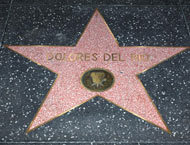
#Dolores Del Rio#Evangeline#Mexico#Latin#Latina#Hollywood's First Latin Superstar#Latin Actress#Mexican Actress#Mexicana#Golden Age of Hollywood#Film Classics#Old Hollywood#Vintage Hollywood#Hollywood#Hollywood Walk of Fame#Walk of Fame#Movie Legends#movie stars#1900s#28 Hollywood Legends Born in the 1900s
9 notes
·
View notes
Text





2005 Cannes Film Festival - Star Wars: Episode III - Revenge of the Sith Premiere After Party
#Hayden Christensen#haydenchristensenedit#mancandykings#flawlessgentlemen#mensource#dailyactors#actors#swcastedit#my edits
303 notes
·
View notes
Note
♥️
The deep red of your blog reminds me of this gorgeous gown worn by Isabeli Fontana at Roberto Cavalli SS 2005! I believe Bella Hadid also wore this dress recently at a past Cannes Film Festival! Anyways, this dress to me is just such a great mix of classy yet risqué and just ugh I love it so much and as soon as I clicked on your blog, the deep red immediately made me think of it!


4 notes
·
View notes